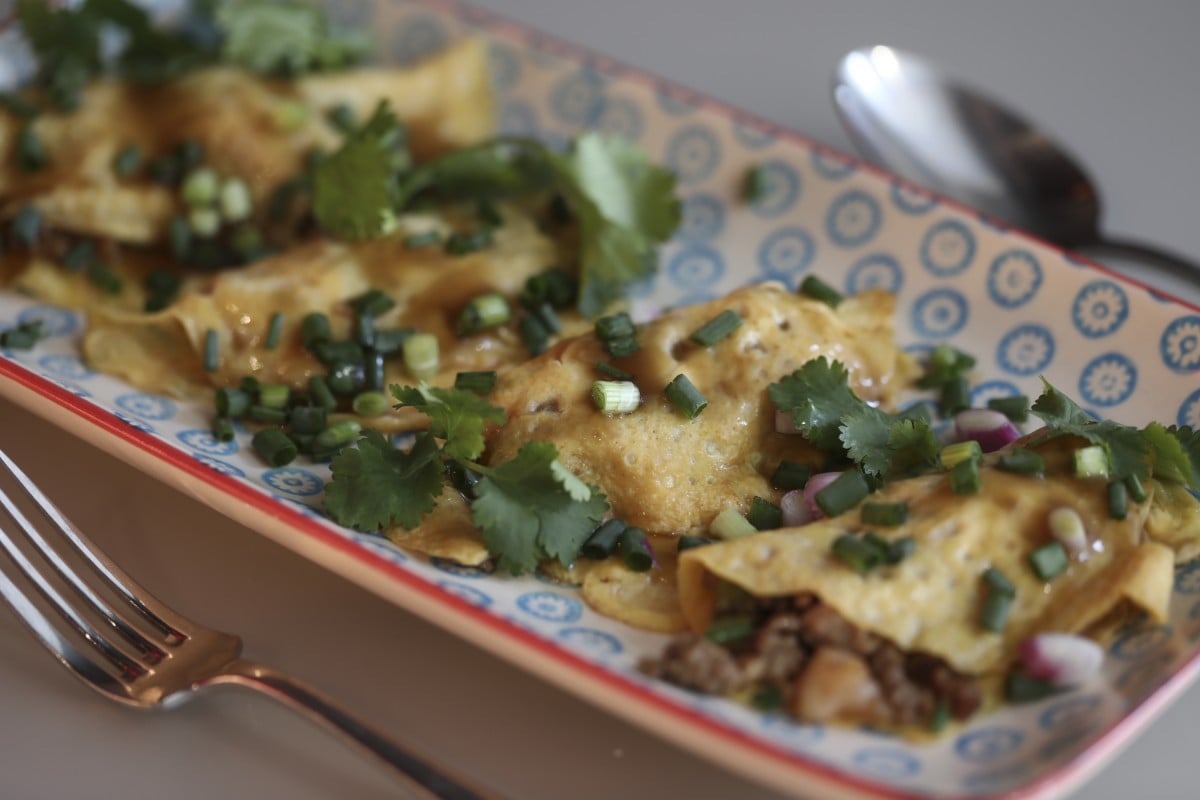
This dish, if served in a Chinese restaurant, would cost a little more than other egg dishes, not because the ingredients are expensive (they’re not), but because it’s a bit fiddly to cook – although not difficult. The egg is pan-fried into small, thin omelettes before being folded over a meaty filling. I use a small wok, but a small skillet works, too.
If you want to get more luxurious, substitute cooked crabmeat for the shrimp: just steam a crab (a flower crab would be ideal), then, when it’s cool enough to handle, extract the meat from the shells. And if you can’t be bothered making individual omelettes, simply scramble the eggs until they’re softly set, then serve the pork mixture on top.
Crack the eggs into a cup or small bowl and use chopsticks or a fork to whisk them until thoroughly blended. Whisk in the salt, then set aside.
Trim off and discard the tips from the snow peas, then cut them on the diagonal into 5mm (¼ in) pieces.
Cut the shrimp in half, slicing them through the back. Remove and discard the veins. Cut the shrimp into small pieces.
Pour the soy sauce into a bowl or cup and add the oyster sauce, rice wine, sugar, white pepper, sesame oil and 30ml (2 tbsp) of warm water. Stir the ingredients to dissolve the sugar.
In a small bowl, stir the cornstarch with 30ml (2 tbsp) of water.
Make the sauce. Pour the oyster sauce into a small pan and add the sugar, white pepper and 60ml (¼ cup) of water. Bring to the boil.
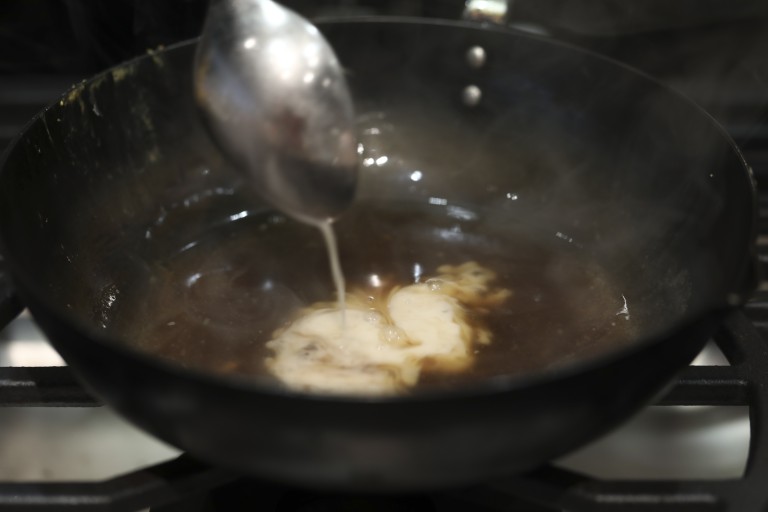
Mix five grams of cornstarch with 15ml (1 tbsp) of water and stir to dissolve. Pour this into the pan and simmer until the sauce is lightly thickened, then turn off the flame.
Cut the spring onions into 5mm (¼ in) pieces.
Make the filling. Heat a wok over a high flame and, when it’s hot, add the oil. Swirl the wok so it’s evenly coated, then add the snow peas. Stir fry for about 15 seconds, then remove them from the wok.
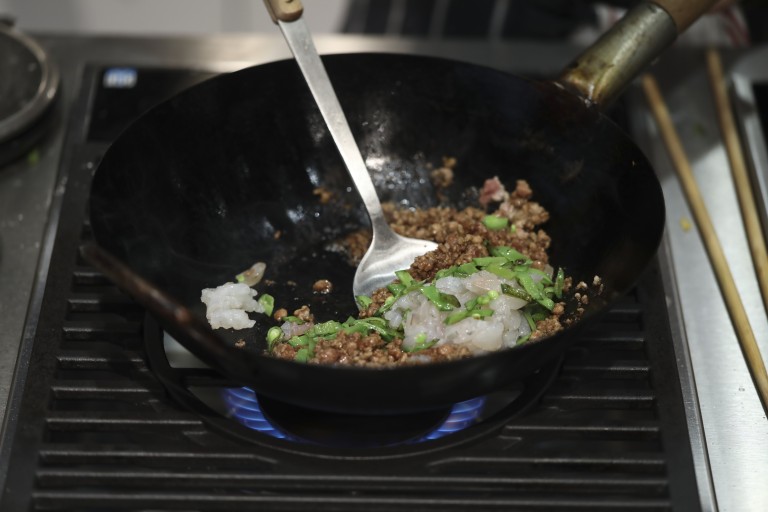
Place the wok back over the high flame, then add the pork. Using a wok spatula, break the pork into small pieces, then add the soy and oyster sauce mixture. Stir constantly until the meat is almost fully cooked. Add the shrimp and snow peas and simmer for a couple of minutes. If the mixture seems dry, add a little water.
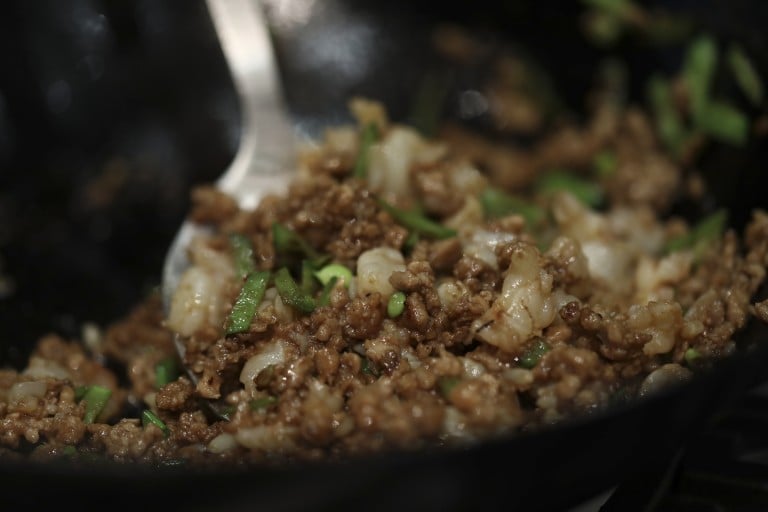
Taste the mixture and correct the seasonings, if necessary.
Quickly stir the cornstarch/water mixture. Stir the meat/shrimp mixture while drizzling in about half the cornstarch/water, adding enough so the sauce thickly coats the filling. Transfer the mixture to a bowl.
Make the omelettes. Heat a small skillet (preferably cast iron) or small wok over a medium flame. When the pan is hot, pour in about 10ml (2 tsp) of cooking oil, then use a paper towel to rub it in so the metal is thoroughly but lightly coated.
Pour in some of the egg mixture, swirling the skillet or wok at the same time, to create a thin layer about 10cm (4 in) in diameter. Let it cook undisturbed until it’s set on the bottom and starting to dry out on the surface – it will turn from shiny to matte.
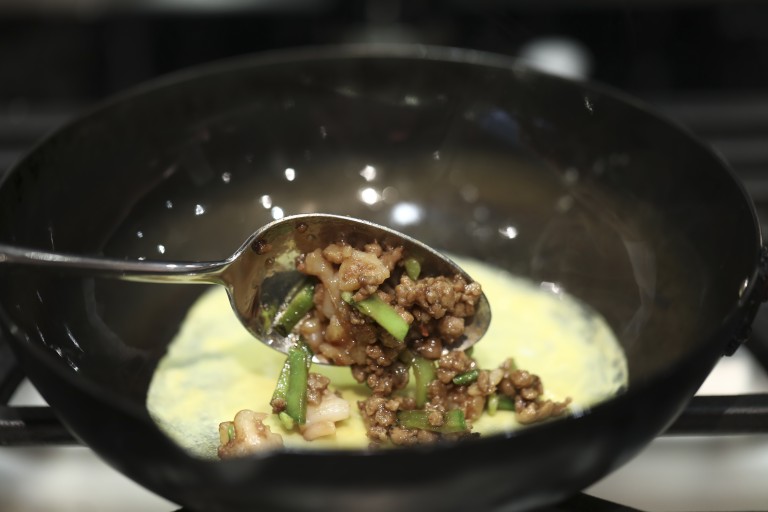
Spoon some of the pork/shrimp mixture just off centre down one side of the omelette, then carefully fold over the other side, to encase the filling. Let it cook undisturbed for about a minute, then carefully lift it out of the skillet or wok onto a serving plate. Use up the remaining egg and filling the same way, oiling the pan as necessary. You should have about 10 to 12 filled omelettes. It’s OK if there’s some filling left over. (If you have two similarly sized pans, you can speed up the process by making two omelettes at the same time.)
Spoon any leftover filling over the omelettes on the serving platter.
Heat the sauce until simmering; if it seems too thick, stir in some water.
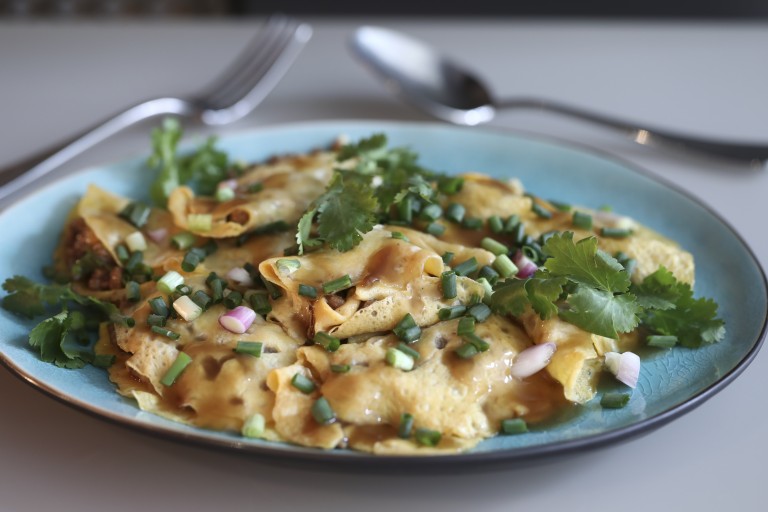
Drizzle the sauce over the omelettes and scatter with spring onion and fresh coriander sprigs. Serve immediately.